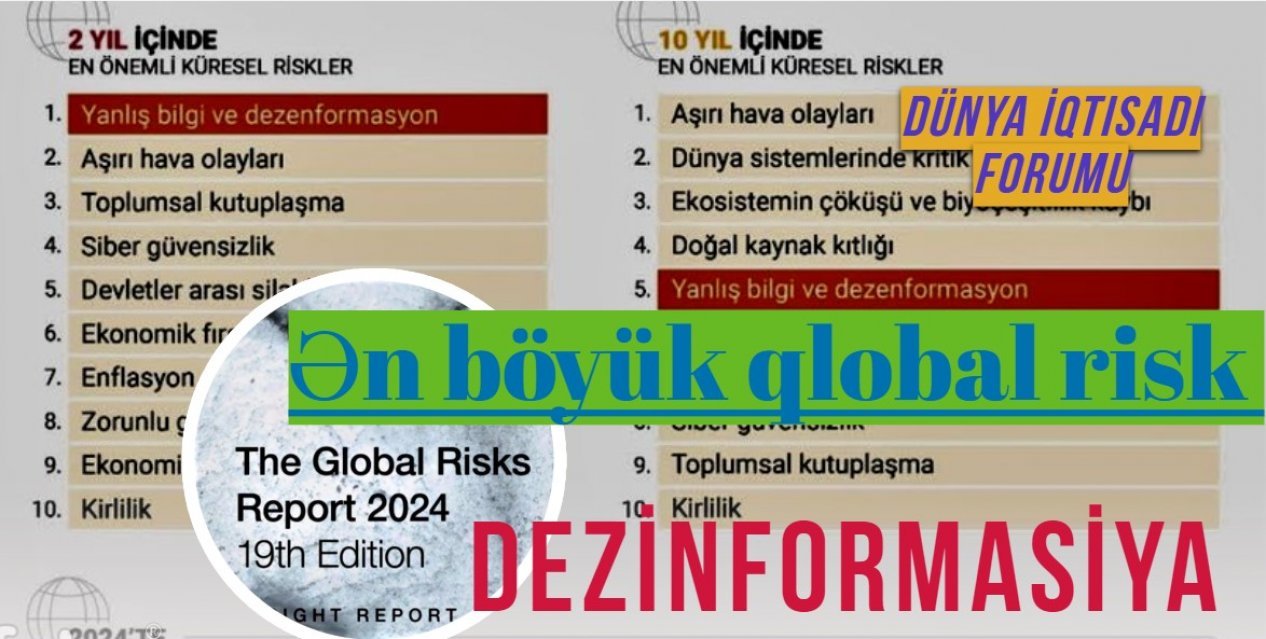
The Global Risks Report 2024 prepared by the World Economic Forum (WEF) has been released. Disinformation is seen as the biggest and number one global risk over the next two years.
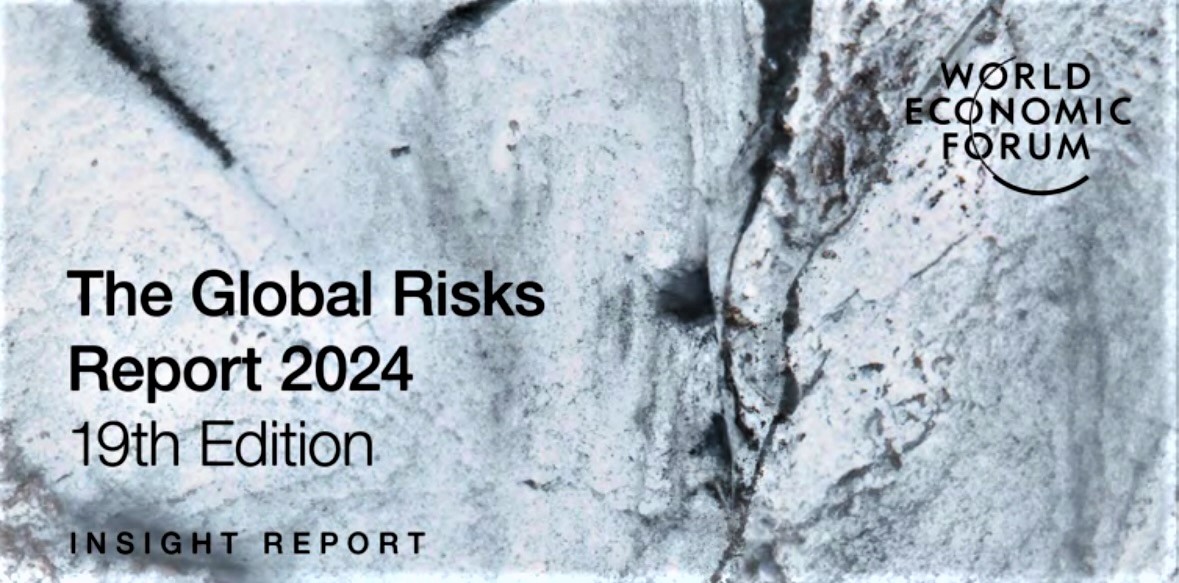
Faktyoxla Lab. presents the report with reference to foreign media.
Based on the analysis of 1,500 experts on the global environment, the report predicts the 10 biggest global risks in the short and long term. The report identifies misinformation and disinformation (in this year's risk forecast) as one of the greatest threats facing humanity. (source)
In short-term forecasts, the problem of extreme weather events comes second. Societal polarization, cyber insecurity, interstate armed conflict, lack of economic opportunity, inflation, involuntary migration, economic downturn and pollution are next in line.
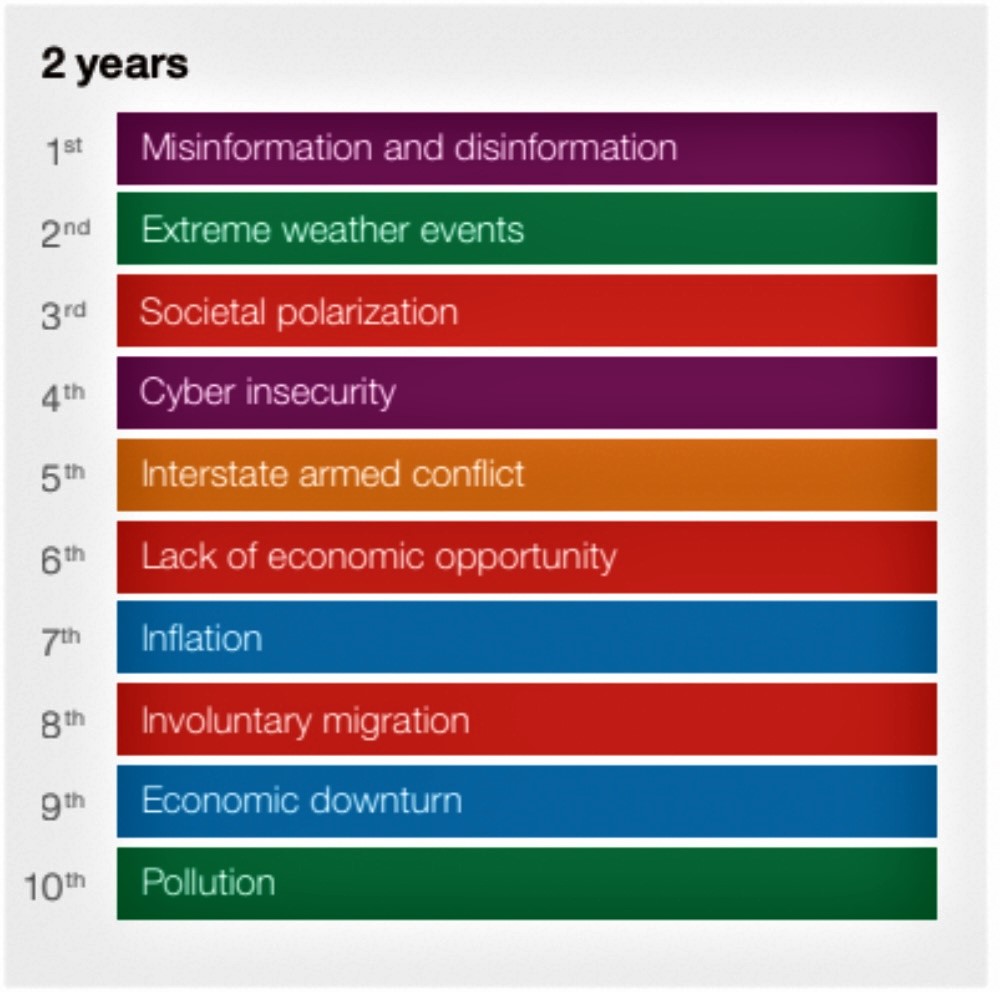
In the long term - that is, the next 10 years - disinformation remains one of the top 5 global risks. Global warming, climate change and the resulting extreme weather events top the list as the biggest threats of the next 10 years. Critical change to Earth systems ranks second.
This is followed by ecosystem destruction and loss of biodiversity and scarcity of natural resources. The fifth risk is the problem of misinformation and disinformation. They are followed by the adverse outcomes of artificial intelligence technologies. At the bottom of the list of 10 threats are involuntary migration, cyber insecurity, societal polarization and pollution.
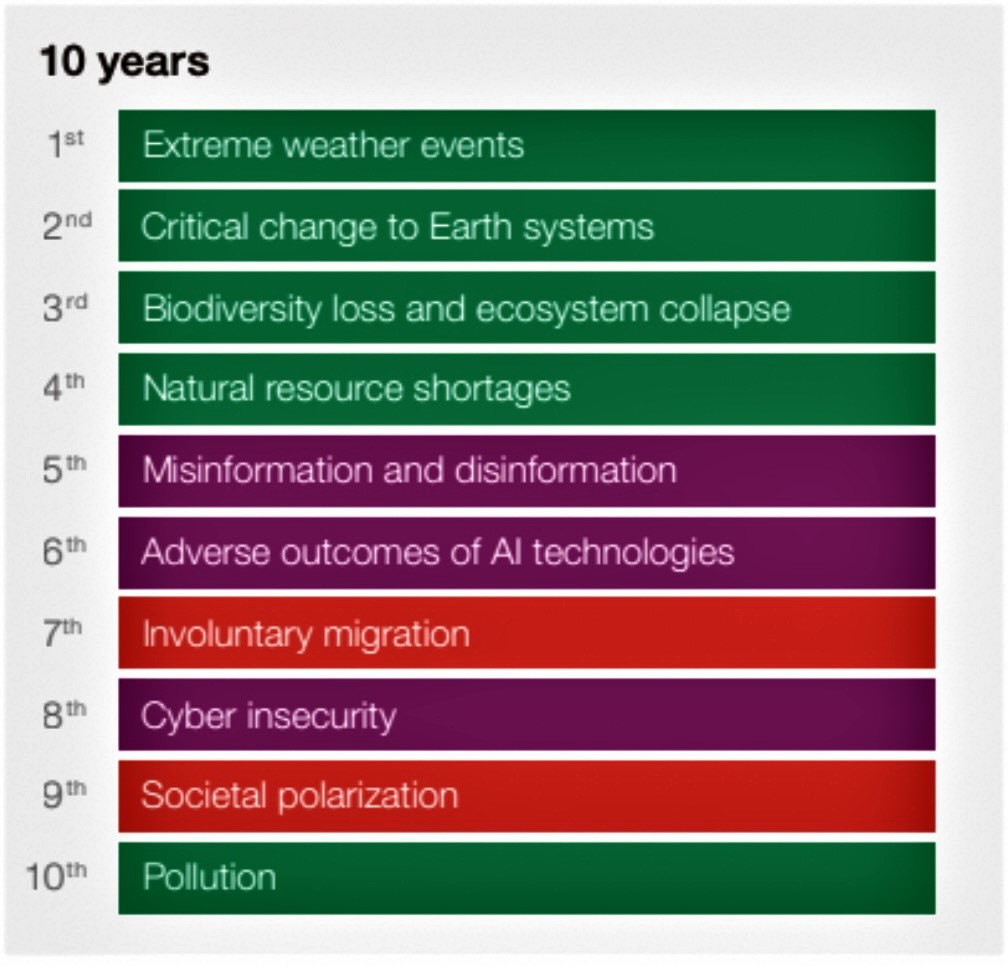
The report lists 5 risks that are likely to cause a global financial crisis this year as follows:
Extreme weather events: 66 percent
Misinformation and disinformation caused by artificial intelligence: 53 percent
Social or political polarization: 46 percent
Housing crisis: 42 percent
Cyberattacks: 39 percent.
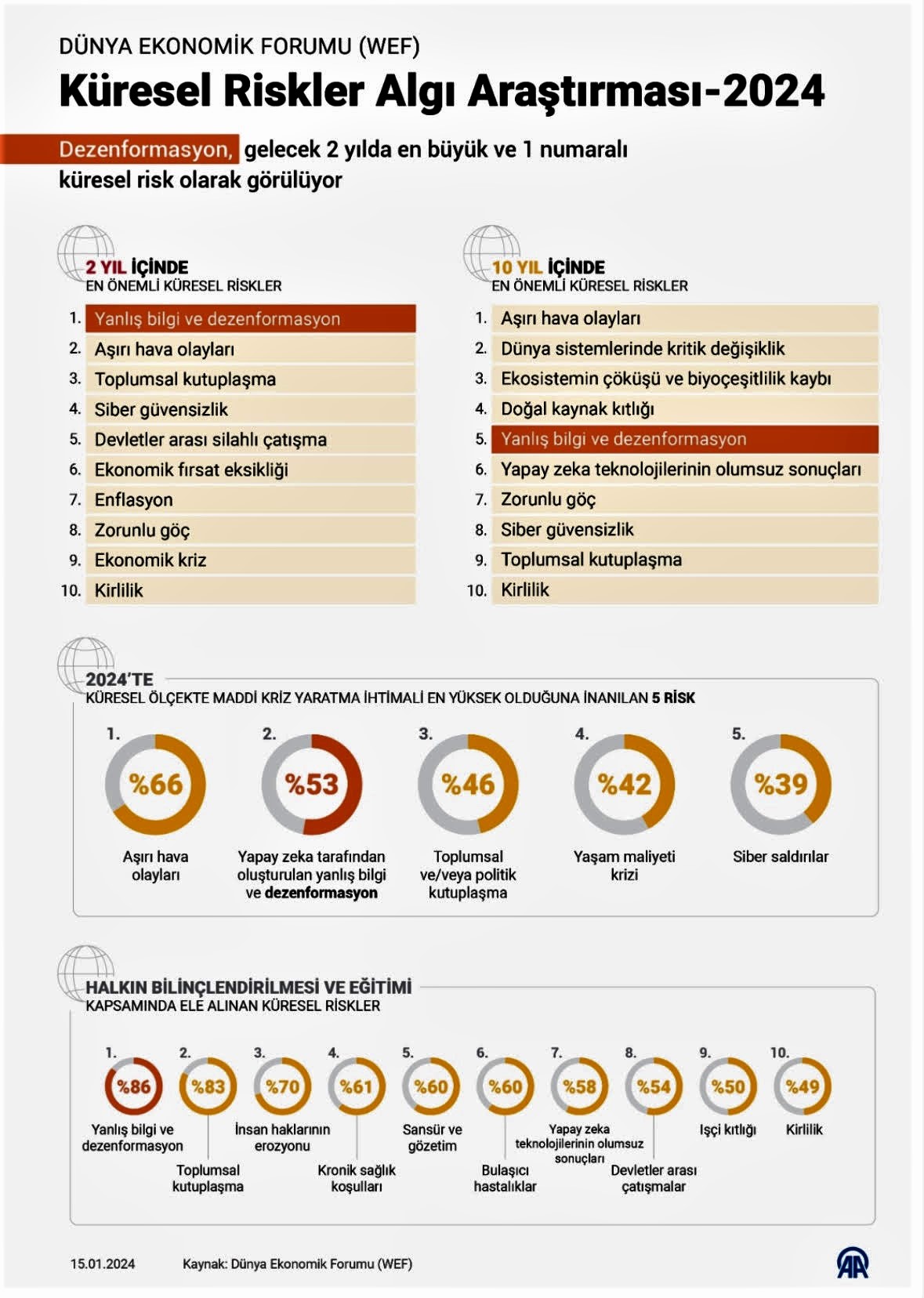
The main global risks faced within public awareness are also reflected in the report. Which of these risks and which approach has the greatest potential for risk reduction, preparedness and action over 10 years are ranked as follows:
Misinformation and disinformation: 86 percent
Societal polarization: 83 percent
Erosion of human rights: 70 percent
Chronic health conditions: 61 percent
Censorship and surveillance: 60 percent
Infectious diseases: 60 percent
Adverse outcomes of AI technologies: 58 percent
Intrastate violence: 54 percent
Labor shortages: 50 percent
Pollution: 49 percent
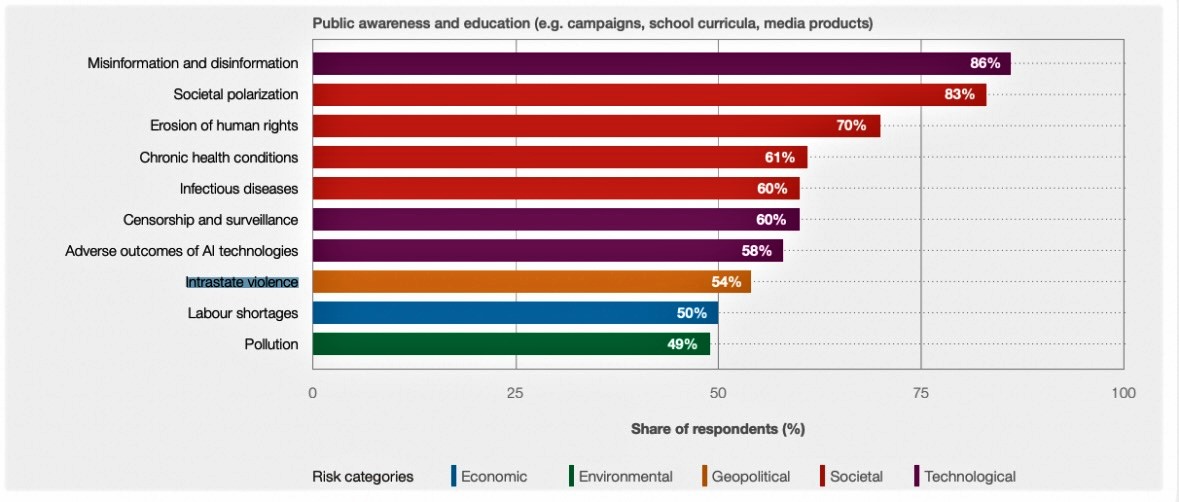
The report draws attention to the problem of misinformation and disinformation arising from artificial intelligence technologies, and also predicts that the problem may affect electoral processes and the economy in the next two years, causing social unrest and conflict.




















